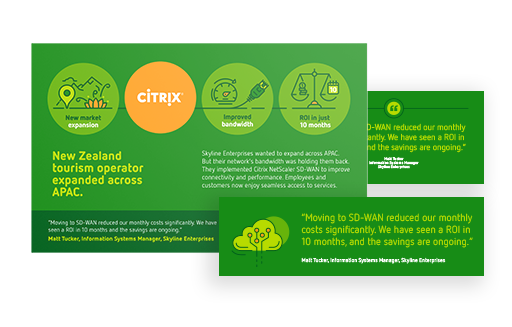In this article, Matias discusses the challenges faced by customer marketers in building an effective content strategy and provides solutions to tackle them. Have you heard sellers complain that customer stories are too long? Do they say your stories are not addressing specific questions asked by prospects? Do you struggle to source enough customer nominations? Do sellers struggle to find customer stories? If you answered ‘Yes’ to any of the above, read on to find the solutions.
As a customer marketer, you’ll face many challenges in your quest to build the most effective content strategy. Let’s look at the most common ones and how you can successfully tackle them:
-
“Your customer stories are too long”
Sellers argue that customer stories are too long. They don't want to use these stories in their conversations.
As a customer marketer, you want to help your prospects make decisions. You want to educate them and ensure that their perceived value will match up with the experienced value. You know that there’s no better way to achieve that than with customer success stories. And you know it requires more than 200 words to get that across.
Yet, sellers are thinking in terms of “short, to-the-point, and digestible”.
What if we told you there’s a way to get the best of both worlds?
Since you’re already creating a full length customer success story, you could include a short summary too! We call it the mini story. It covers the customer’s challenge, the solution they implemented and the benefits they experienced in 200 words or less. This format is usually loved by sellers, especially if you can provide it in the format they already use often in their conversations (e.g. email template or a slide). For extra points, you can add a shortlink from this asset to your full length customer success story.
-
“Your customer stories do not answer the specific question my prospect has”
Sellers want content that can directly and immediately influence their pipeline.
Instead of taking criticism, you can turn it into a constructive practice. We call it objection handling. Together with sellers, create a list of burning questions that most prospects have. Since you’re already doing the research and interviewing customers for each story, you can record their unique answers to these burning questions. These quotes can be included in the main story, the mini story or even reside in a dedicated ‘objections handling’ quote library available to sellers.
Moreover, this library can grow over time to include categories for each product or service your brand offers. You can add metadata for industry, size of business, speaker role, and many more to add value for sellers and influence the pipeline.
-
“I don’t have enough customer nominations”
Customer marketers struggle to source enough customer nominations for customer stories.
This can quickly turn into a self-fulfilling-prophecy: sellers need specific customer evidence to close deals and marketers need closed deals to get specific customer nominations.
Close collaboration between customer marketing and sales teams is the solution. However, there are you can do to break the cycle.
- Monitor the sales pipeline: identify deals that are closing and reach out to those sellers to see if they could nominate their customer.
- Participate in the seller community: attend calls and secure a 10-minute spot to personally ask for nominations you seek.
- Review existing customers: look at what customers are doing with your service or product. Perhaps they found new or innovative ways to apply it? They could be (re) nominated for a story.
-
“I can’t find the story I need”
Sellers complain how difficult it is to find customer stories for a specific industry, country, product or service. You get frustrated because they end up using the same customer success story. Or worse: none at all.
As customer marketers, we focus on promoting new customer success stories on our website, blog, social media, and any other public channel we have at our disposal. We sort of hope that—or forget to think if—our sellers are noticing the new stories on any of these channels. They might. Yet it doesn’t guarantee they’ll remember or find that story once they want to use it in their sales conversations.
One possible fix you can try is creating a dedicated library to centralize customer evidence content and tag it according to key scenarios and search language used by sellers. Another fix is creating compilation assets to curate customer success stories based on key scenarios in an engaging customer-ready format like a PDF or a presentation. Finally, you can try a dedicated chat (Slack, Teams, etc) where someone handles customer evidence requests—a reference fulfillment manager. The latter fix is especially valuable when your sellers, in addition to customer evidence, might also look for reference customers for P2P calls or where you want to make customer advocacy more accessible for the broader organization, such as product feedback, analyst relationships, events and more.
As customer marketers, we deal with challenges every day. With these solutions, you have the opportunity to minimize the amount of challenges posed by your colleagues. Provide sellers—and your broader organization—with the content they need to close deals, make it easy and relevant. This will ensure that sellers have easy access to customer success stories, objections handling, and customer evidence whenever they need it. In turn, you’ll get more nominations and will enhance the impact you deliver through customer evidence.








